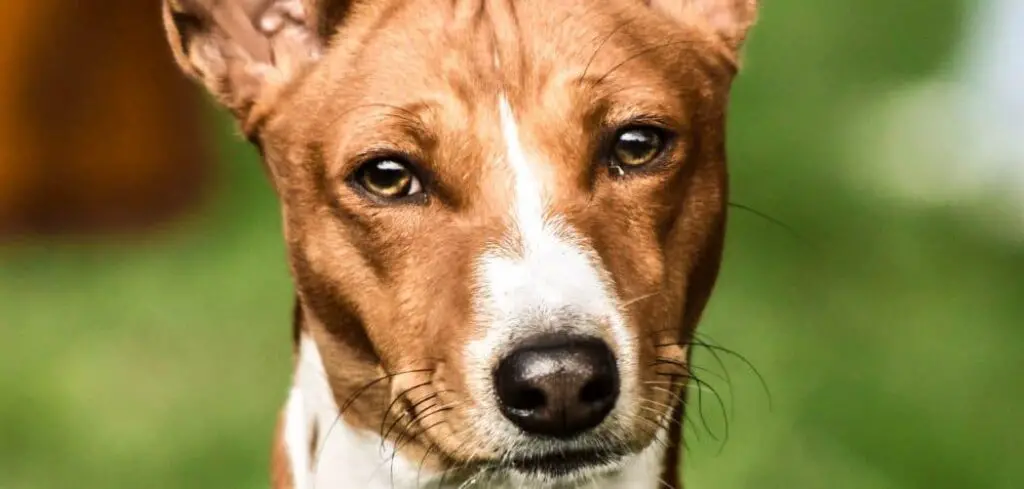If your dog suddenly develops diarrhea with blood and mucus, it can be alarming and distressing.
This symptom often indicates irritation or inflammation within the digestive system, and in some cases, it may signal a serious underlying condition that requires urgent veterinary attention.
We outline the common causes of a dog having diarrhea with blood and mucus, what you can do at home, and when to seek veterinary help.
Dog Diarrhea with Blood and Mucus — Why It Happens
When a dog has diarrhea that contains both blood and mucus, it usually means the intestines are inflamed or damaged. This can happen due to infections, dietary indiscretions, parasites, or more severe conditions like hemorrhagic gastroenteritis. Stress, sudden food changes, or toxin exposure can also disrupt the gut lining, leading to these symptoms.
While mild cases may resolve with rest and supportive care, persistent or severe episodes can point to life-threatening problems that should not be ignored.

Dog Diarrhea with Blood and Mucus: Common Causes
Hemorrhagic Gastroenteritis (HGE)
Hemorrhagic gastroenteritis is a sudden and severe condition where the dog’s intestines become highly inflamed, leading to profuse watery diarrhea mixed with bright red blood and mucus.
Dogs may also vomit and become lethargic. The rapid loss of fluids can cause dangerous dehydration in a matter of hours.
Without prompt treatment, HGE can be fatal, which is why urgent veterinary intervention is always required.
Read more: Smelly Watery Diarrhea in Dogs (Here’s what it means)
Parvovirus
Canine parvovirus is a highly contagious viral infection, especially common in puppies and unvaccinated dogs.
One of its hallmark symptoms is bloody, foul-smelling diarrhea with mucus. Dogs may also vomit, refuse food, and quickly become weak.
Parvo attacks the intestinal lining, causing it to slough off, which is why blood and mucus are seen. This is a medical emergency, and immediate veterinary care gives the best chance of survival.
Parasites
Intestinal parasites such as whipworms, hookworms, and Giardia can irritate the gut lining, leading to diarrhea with blood and mucus.
In some cases, the diarrhea may come and go, or it may be chronic and gradually worsen. Worm infestations may also cause weight loss, poor coat condition, or anemia.
Puppies are particularly vulnerable to the effects of parasites, and left untreated, infestations can become life-threatening.
Dietary Indiscretion or Food Intolerance
Many dogs are curious eaters, and consuming spoiled food, garbage, or sudden changes in diet can trigger diarrhea with mucus, and sometimes streaks of blood if the gut becomes irritated.
Certain food intolerances, such as sensitivity to ingredients like chicken, beef, or dairy, can also lead to repeated bouts of soft stool with mucus.
While mild cases may pass, persistent symptoms may indicate that the food is causing ongoing inflammation.
Bacterial Infections
Infections caused by bacteria such as Salmonella or Clostridium can inflame the intestinal lining, producing smelly, watery diarrhea that may contain blood and mucus.
These infections may develop after a dog eats raw or contaminated food.
Some bacterial infections can also spread to humans, making it especially important to seek veterinary care and practice careful hygiene at home.
Inflammatory Bowel Disease (IBD)
Chronic diarrhea with blood and mucus may signal inflammatory bowel disease. In this condition, the immune system attacks the digestive tract, causing long-term inflammation.
Dogs with IBD may have alternating periods of diarrhea and normal stools, often accompanied by weight loss, poor appetite, and abdominal discomfort.
IBD requires lifelong management and veterinary supervision to keep symptoms under control.
What to Do If Your Dog Is Experiencing Diarrhea with Blood and Mucus
If your dog has mild diarrhea with a small amount of mucus or blood but is otherwise acting normal, you can start by withholding food for 12–24 hours (but never withhold water) to give the intestines a chance to rest.
Afterward, you can offer a bland diet such as boiled chicken and plain rice in small amounts. Always keep fresh water available, as diarrhea can quickly cause dehydration.
If your dog is showing stress-related diarrhea, providing a calm, quiet environment can sometimes help. For suspected dietary triggers, switching to a bland or limited-ingredient diet under your vet’s guidance may bring relief.
You should also monitor your dog’s stool closely. If the blood becomes more pronounced, the diarrhea worsens, or other symptoms like vomiting and lethargy appear, stop home care immediately and contact your veterinarian.
When to Call or Visit Your Vet
You should seek veterinary attention right away if:
The diarrhea is very watery, frequent, or contains large amounts of blood.
Your dog is also vomiting, refusing food, or extremely lethargic.
There are signs of abdominal pain, bloating, or collapse.
The dog is a puppy, elderly, or has existing health problems.
Symptoms persist for more than 24 hours, even if mild.
Because dehydration can set in very quickly, especially in small dogs and puppies, it’s always safest to err on the side of caution.
Your vet may perform stool tests, bloodwork, or imaging to identify the cause and begin treatment with fluids, medications, or dietary therapy.
Read more: Dog Loose Stool With Mucus (When to worry)
Key Takeaway
Dog diarrhea with blood and mucus is never a symptom to ignore. While mild cases can sometimes resolve with supportive care, many underlying causes are serious and require prompt veterinary attention.
The safest step you can take is to monitor your dog closely, keep them hydrated, and contact your vet as soon as possible. With timely care, most dogs recover well and return to their happy, healthy selves.
